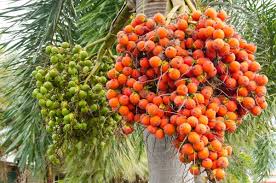Capsicum (bell pepper) farming requires careful attention to various factors such as soil preparation, planting, nutrient management, and pest control. Here is a comprehensive package of practices for capsicum cultivation:
1. Site Selection and Soil Preparation
Climate and Soil Requirements:
- Capsicum thrives in warm climates with temperatures ranging from 18-30°C.
- Well-drained, sandy loam soils rich in organic matter are ideal.
- Soil pH: 6.0 to 7.0.
Land Preparation:
- Plow the field thoroughly to a depth of 20-30 cm to break up clods and ensure a fine tilth.
- Remove weeds, debris, and stones.
- Create raised beds or ridges to facilitate drainage and prevent waterlogging.
2. Seed Material and Planting
Variety Selection:
- Choose high-yielding, disease-resistant capsicum varieties suitable for your region.
Seedling Preparation:
- Sow seeds in nursery beds or trays filled with a mixture of soil, sand, and compost.
- Maintain moisture through regular watering and protect seedlings from direct sunlight initially.
- Transplant seedlings to the main field when they are 4-6 weeks old and about 10-15 cm tall.
Planting:
- Planting time: Depending on the variety and region, typically during early spring or late summer.
- Spacing: 30-45 cm between plants and 60-75 cm between rows.
- Plant seedlings at a depth of 2-3 cm.
3. Nutrient Management
Fertilization:
- Apply well-decomposed farmyard manure (FYM) at 20-25 tons per hectare before planting.
- Basal dose: Apply NPK at 100:50:50 kg per hectare at planting time.
- Topdressing: Apply additional nitrogen at 25-30 kg per hectare 30 days after planting and again at 60 days.
4. Irrigation Management
Watering Schedule:
- Regular irrigation is crucial, especially during flowering and fruit development.
- Frequency: Irrigate every 5-7 days depending on soil moisture and weather conditions.
- Drip irrigation is recommended for efficient water use and to minimize water contact with foliage, reducing disease risk.
5. Weed Management
Weed Control:
- Manual weeding or hoeing 2-3 times during the growing season.
- Use mulching with organic materials like straw or plastic to suppress weeds and conserve moisture.
- Herbicides can be used as per recommendations from local agricultural extensions.
6. Pest and Disease Management
Common Pests:
- Aphids, thrips, whiteflies, and fruit borers.
Common Diseases:
- Powdery mildew, bacterial spot, and anthracnose.
Control Measures:
- Use disease-free planting material.
- Rotate crops with non-host plants to reduce pest and disease incidence.
- Regularly monitor the field and apply recommended organic or chemical pesticides and fungicides.
- Practice good field sanitation by removing and destroying infected plants.
7. Training and Pruning
Training:
- Train plants to grow vertically using stakes or trellises.
- Tie the plants to the support structures at intervals to prevent them from falling over.
Pruning:
- Prune lower leaves and side shoots to improve air circulation and light penetration.
- Regularly remove any damaged or diseased leaves and branches.
8. Harvesting and Post-Harvest Management
Harvesting:
- Capsicum plants start bearing fruits 60-90 days after transplanting.
- Harvest fruits when they are firm, glossy, and have reached the desired size and color.
- Use a sharp knife or pruning shears to cut the fruits, leaving a small stem attached.
Post-Harvest Handling:
- Sort and grade the harvested fruits based on size, color, and quality.
- Wash the fruits in clean water to remove dirt and pesticide residues.
- Dry the fruits using a clean cloth or air-drying to remove excess moisture.
9. Storage
Storage Conditions:
- Store capsicum in a cool, dry, and well-ventilated place.
- Ideal storage conditions: 7-10°C and 85-90% relative humidity.
- Use perforated plastic crates or boxes to allow air circulation and prevent spoilage.
10. Marketing
Market Channels:
- Sell fresh capsicum through local markets, wholesalers, cooperatives, or directly to retailers.
- Explore value addition through processing into products like dried capsicum or capsicum powder for higher profitability.
Additional Tips
- Intercropping:
- Consider intercropping with compatible plants like onions, carrots, or lettuce to optimize land use and increase income.
- Organic Farming:
- If opting for organic farming, avoid synthetic chemicals and use organic manures and bio-fertilizers.
- Record Keeping:
- Maintain detailed records of farming activities, inputs used, and expenses for better management and traceability.
Implementing these practices should help you achieve a successful capsicum farming venture. For more region-specific advice, consult local agricultural extensions or experts.






